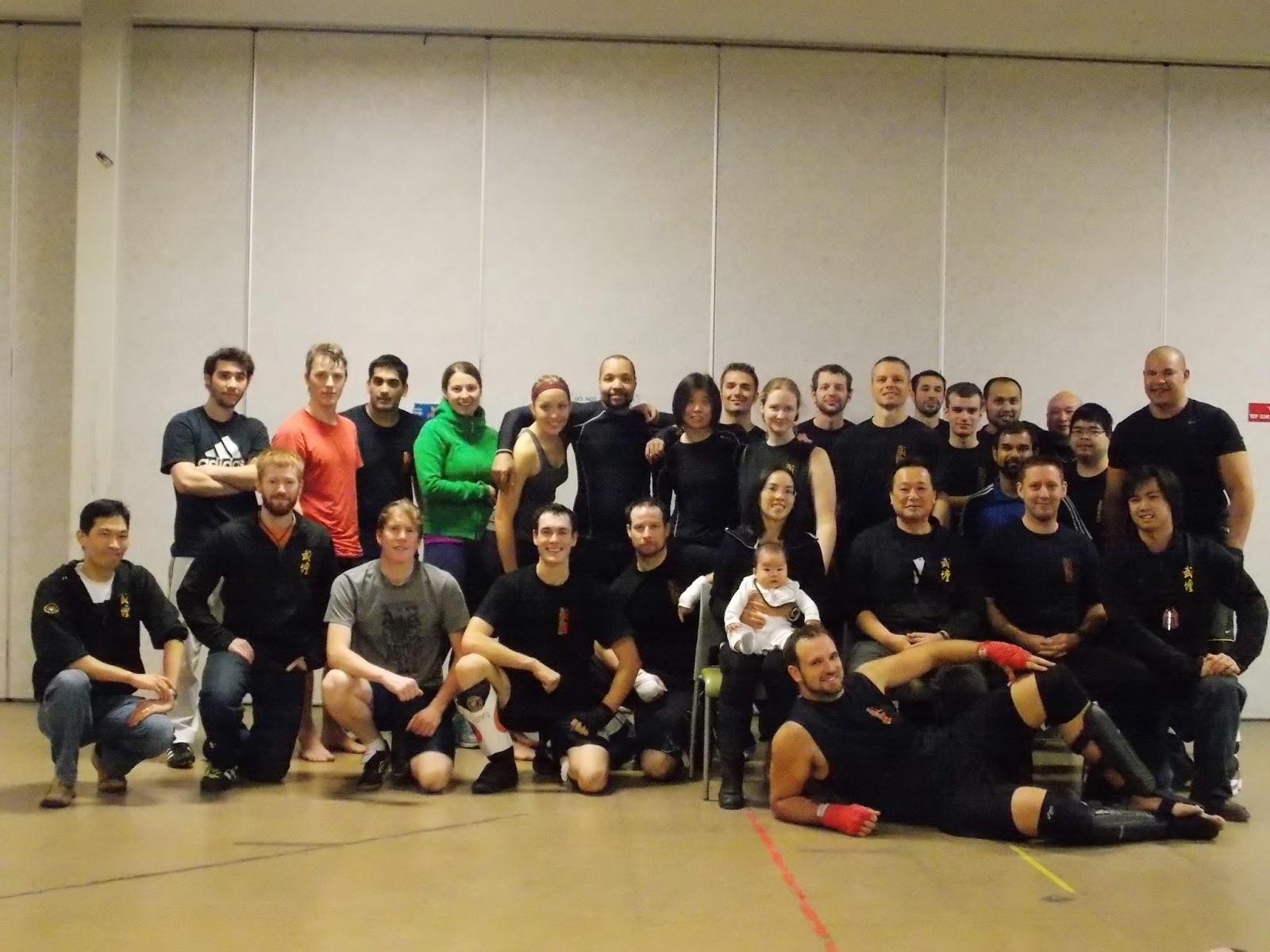Background: I met Shifu* Lorne Bernard
many years ago in Baltimore at the U.S.
International Kuoshu Championship. If you asked him he probably couldn’t
even reference our first meeting as his mind was preoccupied on getting a
fighter ready to compete. Coupled with the fact I was acting like most
tournament newbies, hanging quietly off my Sifu’s shoulder clutching the medals
I have just won in forms and weapons, I was quite unmemorable. After a brief conversation between
teachers, Shifu Bernard congratulated me on placing and walked his fighter to
the ring. That year his fighter, Etienne, would finish 3rd in the
full contact Lei Tai.
The reason I
tell this story is that I met Shifu Bernard’s fighter, Etienne Métayer, a year later while preparing
for the Lei Tai in Baltimore once more. Etienne came to the school I was
training at in order to learn defenses against wrestlers and takedowns. I had
started fighting in full contact tournaments and due to our size Etienne and I
became sparring partners, each helping the other prepare for our own fights.
From the lessons that he had learned for Shifu Bernard, Etienne brought a
unique fighting style that forced me to adapt my strategies.
Etienne
would go on to win gold in the Lei Tai and I would win all my matches that
year. Before I ever formally learned a lesson from Shifu Bernard I had the
lessons of Fujian White Crane transmitted to me through the fists of one of his
fighters. The other reason I tell this story is because it demonstrates Shifu
Bernard’s commitment to excellence and constant improvement that his students
see. This drive to use Traditional Kung Fu coupled with an impressive record makes Shifu Bernard
a top instructor.
Shifu Lorne Bernard and his fighter Etienne after winning the Lei Tai.
Photo credit of Shifu Bernard's Facebook.
What did I learn: There are few
instructors that will open a training session with “Do you like your sex life?”
Puzzled I admitted it was rather important to me. No sooner then I finished
Shifu Bernard’s foot was between my legs. You can believe that when he
suggested I switch my stance to protect my groin I agreed and made some
adjustments.
If you were
to walk into the beginning of Shifu’s Class and didn't know what was going on
you would bear witness to a seemingly ridiculous scene. Lines of people with
their feet spaced apart, feet turned inward, crouching down and flicking their
hands out to each side. When you dive into the movement you understand that the White Crane practitioners are building muscle in their legs while heightening their reflexes
and hand speed. They develop wicked hand speed and striking reflexes via these
drills. I can attest to this having been on the receiving end of those very fast strikes.
A very grateful Travelling Ronin with Shifu Lorne Bernard.
What was similar to my previous training: In
order to have a better understanding of Fujian White Crane Shifu had me stand
on a line and practice transitioning to one their basic stances. Once I was
getting the hang of the movement Shifu explained that I was learning to “eat my
opponent’s stance.” The footwork allowed a transition to a sweep that I use all
the time. However, I had never thought to transition to the sweep in that
manner. Shifu Bernard had me work on a seemingly beginner exercise only give me
another entry into much more advanced techniques.
Later that
night we worked on push body and push hands along with some striking drills. The
White Crane system was coming full circle. The footwork and basic forms I had
worked on led to striking. The striking speed was a by-product of the
reflex drills we had begun class with. Once you got in close the basics of
uprooting and unbalancing an opponent were applied to keep the initiative. The
Fujian White Crane system might structure movements slightly differently yet
the completeness reminded me much of my Sifu’s training.
Myself and three of Shifu Bernard's senior students. They took time from their training
to help me out. True Martial Artists and gentlemen.
Conclusion: People have asked me if I
get bored of learning basics when I visit a school. The answer is no because it
opens up new avenues for my advanced techniques. When viewed in isolation
people might question the effectiveness of push hands or the reflex drills.
After all no fight will ever look like push hands with the fluid rolling of the
fighters. When looked at from a holistic view those individual drills are the
building blocks of a very powerful system from the initial engagement to the
conclusion of the fight.
Shifu
Bernard’s emphasis on traditional techniques and his systems heritage is what
makes him a great instructor. If you are looking for Chinese Martial Arts that
are taught with a traditional focus yet with proven results he is a wealth of
knowledge.
Best regards and keep training,
Martin "Travelling Ronin" Fransham
* You will see both Shifu and Sifu in this blog. Both are accepted and I have chosen to keep the spelling consistent to how each teacher writes their title. This leads to both spelling being used interchangeably.
On Facebook: https://www.facebook.com/pages/Travelling-Ronin/583588935029877?ref=hl
On Youtube: http://www.youtube.com/playlist?list=PL9ABBC27829A5AD3F
White Crane Kung Fu Academy's Website: http://www.shaolinwhitecranekungfu.com/
* You will see both Shifu and Sifu in this blog. Both are accepted and I have chosen to keep the spelling consistent to how each teacher writes their title. This leads to both spelling being used interchangeably.
On Facebook: https://www.facebook.com/pages/Travelling-Ronin/583588935029877?ref=hl
On Youtube: http://www.youtube.com/playlist?list=PL9ABBC27829A5AD3F
White Crane Kung Fu Academy's Website: http://www.shaolinwhitecranekungfu.com/








